Service functions
-
Download center
-
Add to My Report
-
My Report (0)
-
Print this Page
-
Download in PDF
-
Share
-
Feedback
-
Interactive analysis
-
Browsing history
-
Offline version
-
Company in soc.networks
-
Watch report 2011
-
Popular pages
-
Company on the map
-
Compact view
| Enter e-mail recipient * | Your e-mail * | Comment : | |
| * required fields | |||
175th Anniversary of Russian Railways
Last year, the railway service in Russia celebrated its 175th anniversary.

Peering into a long way, laid by our predecessors, we understand the enormous responsibility for the present and future of the Company. This responsibility has never confined to short-term goals, or narrow objectives of the industry. The railways were and still are the largest component of the Russian transport system, one of the main mechanisms for the development of its economy and the welfare of its citizens.
Our country is changing, and JSC “Russian Railways” is changing along with the country. Infrastructure giant that was focused on mass transportation of cargoes and services to large customers, is now being transformed into a flexible, efficient transport and logistics operator, which is providing to various clients a set of qualitative and modern services. Changing the business model is programmed by the new long-term development strategy of “Russian Railways”, adopted in 2012. The implementation of this strategy will allow Russian Railways to follow major challenges of the timebeing, while maintaining the competitive advantages gained through the history of the railways industry in Russia.
In this report, not only activities of the company in 2012 are presented. We would like to show how the company implements its long-term objectives of development, as long as objectives for the development of Russia.
Road, space, time
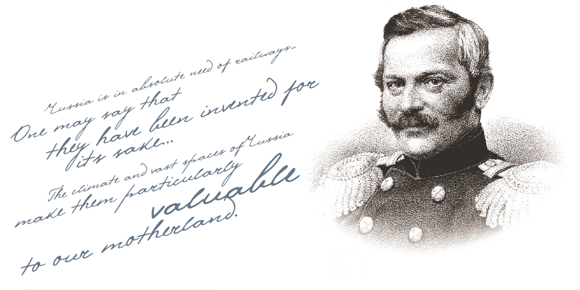 P.P. Melnikov, First Russian Minister of Railways, outstanding engineer, one of the authors of the Petersburg — Moscow mainline project
P.P. Melnikov, First Russian Minister of Railways, outstanding engineer, one of the authors of the Petersburg — Moscow mainline project The development of transport — and, particularly when it comes to Russia, the development of railways — taking into consideration the multiplier effect strongly fosters growth across a wide range of industries and businesses. The new strategy of JSC “RZD” has been developed with the understanding of this paramount task.
175th anniversary of Russian Railways
A state-based approach has always been a characteristic of Russian Railways. This is evidenced by 175 years of their history starting from the day when Emperor Alexander II signed the Imperial Decree for the creation of the first railway system. The very first five years after the Decree saw the construction of nearly three thousand kilometers of railways in Russia.
They connected St. Petersburg with Moscow, Kiev and Black Sea ports, Brest and, via these, European capitals and the Atlantic. In 1880 the extremely challenging construction of the Caspian railway that ran through a sandy desert started. In 1891, a megaproject for the construction of the Great Siberian Route was launched. The press of the day compared it to the discovery of America and the construction of Suez Canal in terms of its importance and implications.
Today one would say that railways were the technological breakthrough of the day as they quickly and dramatically transformed markets, industries, territories and society. The accelerated pace of railway construction led to a surge in demand for products of all backbone industries — metallurgy, machine building, coal production — and resulted in a notable increase in Russia’s output and GDP.
Railroad construction had driven the development of natural and technical sciences: from geology to material science. Railroad workers conducted social and economic research that would have far-reaching effects. An example of such a decision was the construction in 1893 of the trans-Siberian line bypassing freethinking Tomsk that resulted in the establishment of a new powerful regional center — today’s Novosibirsk. Later on, the trans-Siberian line connected Novosibirsk and the whole of Siberia with Kazakhstan and Central Asia.
Many advanced managerial decisions were also related to railways. Construction was financed by the state and private partners (both Russian and foreign) and their interests needed to be coordinated given the impact of this development on the Russian state. As a result, it was at this time when basic approaches to arrange private-public partnerships were test run for the first time. For example, S.Yu. Vitte, the author of the first common charter of the Russian railways, underlined the need “to develop economic activities in vast territories to increase the wellbeing of people”.
Railways connected and condensed huge spaces of Russia, preserved the integrity of the country and ensured its economic and political security in time of peace, but specifically in the years of war and revolution. Over four years of World War II, railways transported 20 mln cars with machinery, weapons, ammunition and equipment. The length of a train made of these cars would circle the Equator four times. Victories in war were accompanied by the rattle of wheels. It is no wonder that the country did not stop developing railways even in the hardest years. For example, the Transpolar mainline was laid in 1947, when the country was still suffering from post-war famine. It is difficult to overestimate the feat of people who built a road in the permafrost region knowing that in 1966 the discovery of the Urengoy gas field near the mainline would be made.
Today, as always, JSC “RZD” is not just one of Russia’s largest companies. The importance of the role of the railways in today’s economy is evidenced by the traffic density indicator that describes the intensity of their use: in Russia, it is 17 times higher than in the European Union.
Nearly 1 million of JSC “RZD” employees manage transportation on the world’s third largest railway network ensuring safe and coordinated freight and passenger traffic. Today, the successful operation of this huge transport and infrastructure complex is key to the social and economic development and competitive power of the entire country.
175 year overview of the Russian Railways
- 1837
- 1862
- 1887
- 1912
- 1937
- 1962
- 1987
- 2012
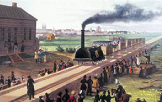
At 12:30 p.m. the first train left St. Petersburg to Tsarskoye Selo; first public railroad launched in Russia (27 km)
Start of industrial train building at Alexandrovsky ironworks (the first Russian locomotive was built earlier, in 1834)
Start of regular service of St. Petersburg — Moscow Railways (travel time — 15 hours 45 minutes)
Peterhof Railways was opened; the first track section was from St. Petersburg to the Baltic ports
The first section of the Moscow — N. Novgorod state railway was launched
Russian Ministry of Railways was created
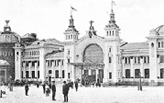
Moscow-Smolensk railways were extended to Brest (1,100 km)
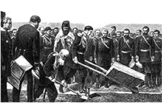
The future Emperor Nicholas II laid the foundation stone of the trans-Siberian line in Vladivostok
Railway bridge over Yenisei connected sections of the Siberian Railways. As did the Eiffel Tower, the bridge received the Grand Prix and gold medal at the world exhibition in Paris in 1900
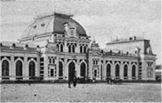
Saratovsky (Paveletsky) railway station was built in Moscow to service Ryazan-Ural Railways
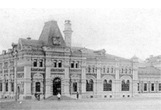
Vindavsky (Rizhsky) railway station of the largest private Moscow-Vindavo-Rybinskaya railway was built

Butyrsky railway station on the Savelovskaya line, built under the patronage of S.I. Morozov, was opened in Moscow
Regular railway service was launched between Moscow and Vladivostok across Russia

Train service was launched from Kievsky railway station in Moscow
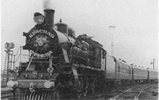
The first Soviet express Red Arrow and first sleeping coaches in the USSR were launched
Smaller Moscow Railway commenced operation
The first train arrived to blockade Leningrad from the continent
Moscow — Berlin regular railway service was launched

The first trip of the Rossiya train: travel from Moscow to Vladivostok takes 143 hours 20 minutes

Through traffic along the Baikal-Amur mainline was officially launched
Transport Charter of the Railways of the Russian Federation was adopted
Trans-Siberian line electrification was completed
Federal Law “On rail transport in the Russian Federation” was passed
JSC “RZD” was incorporated

GT1-001 gas turbine locomotive used for the first time to pull a freight train with a weight of 15 th. tonnes
The first trip of Sapsan high-speed train between St. Petersburg and Moscow (travel time — 3 hours 45 minutes)

The first trip of the Allegro high-speed train along the St. Petersburg — Helsinki route
To be continued
 Address of the President
Address of the President
 175th Anniversary of Russian Railways
175th Anniversary of Russian Railways
 Analysis
Analysis
 Save Key Indicators to XLS
Save Key Indicators to XLS
 Transport Development Strategy
Transport Development Strategy
 Investment Activity
Investment Activity
 Download Chapter Financial and Economic Performance
Download Chapter Financial and Economic Performance
 Rating
Rating
 Loan Portfolio
Loan Portfolio
 Management System
Management System
 Governing Structure Of JSC Russian Railways
Governing Structure Of JSC Russian Railways
 Personnel management
Personnel management
 Housing policy
Housing policy